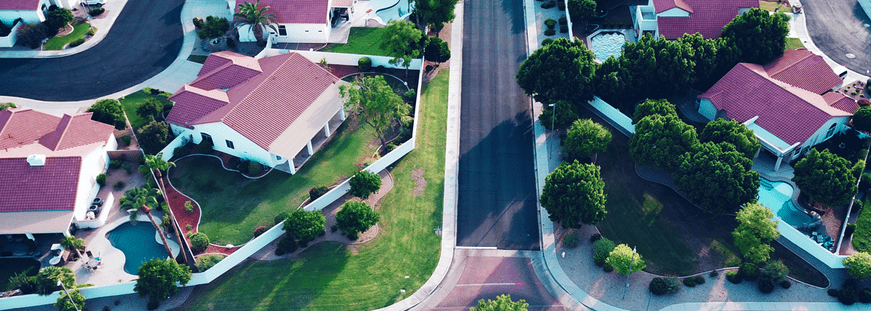Process flow for access to 25% of RSA savings balance for the purchase of residential homes through mortgage. This is the full guidelines on accessing retirement savings account. Retirement Savings Account (RSA) holders access part of their RSA balance and use it as an equity contribution toward securing a residential mortgage.
If you are dreaming of owning your own home but don’t have enough money saved up? Don’t worry, there’s a way to make that dream come true using your RSA (Retirement Savings Account) savings. There is a simple Guidelines on Accessing RSA Balance for Residential Mortgage.
In this easy-to-understand guide, I will explain the step-by-step process of accessing 25% of your RSA balance to purchase a residential home through a mortgage. All your frequently Asked Questions (FAQs) on How Pension account holders can apply for mortgage. There are unnecessary words, just plain and simple instructions. But first, take a look at the Home Mortgage Documents Needed for Pre-Approval and Home Loan Application. So, let’s get started!
Step 1: Check Your RSA Account Balance
Before you can even think about buying a house, you need to know how much money you have in your RSA account. Log in to your RSA account or visit the nearest pension office to check your balance. This is where you start, so make sure you’ve got this covered.
Learn more: What is Cash-out Refinance and How do you Compare Rates?
Step 2: Find a Suitable Mortgage Provider
Now that you know how much you have in your RSA account, it’s time to find a mortgage provider. A mortgage provider is a company that can loan you money to buy a house, and you’ll pay them back in small installments over time. Look for a mortgage provider that offers favorable terms and interest rates.
Learn more: Tax implications on Cash-out Refinance for Rental property
Step 3: Complete the Mortgage Application
Once you’ve found a mortgage provider that you like, it’s time to fill out a mortgage application. This is a form where you provide information about yourself, your income, and the house you want to buy. Don’t worry; they will help you with this form, so you don’t need to be a paperwork expert.
Learn more: How does Cash-out Refinance turns Equity into Cash at closing?
Step 4: Get Approval for Your Mortgage
After you’ve submitted your mortgage application, the mortgage provider will review it. If they think you can pay back the loan, they’ll approve your application. It’s kind of like when you apply for a job, and they decide whether or not to hire you.
Learn more: How to Refinance when you have a Second Mortgage?
Step 5: Request a Letter of Consent from Your Employer
Now, here’s where your employer comes into the picture. You need to ask your employer to write a letter saying that they are okay with you using 25% of your RSA savings to buy a house. This letter is called a “Letter of Consent,” and it’s essential to move forward with your plans.
Learn more: No-Closing Cost Refinance for Homeowners Planning to Move
Step 6: Submit the Letter of Consent to Your Pension Fund Administrator (PFA)
Once you have the Letter of Consent from your employer, take it to your Pension Fund Administrator (PFA). Your PFA is like the keeper of your RSA savings. They need to know that your employer is okay with this plan before they can release your money.
Learn more: Low-cost Mortgage Refinance to lower your Interest rate
Step 7: PFA Processes Your Request
Your PFA will review your Letter of Consent and make sure everything is in order. If everything checks out, they will start processing your request to access 25% of your RSA savings. This part might take a little time, so be patient.
Step 8: Wait for Confirmation
While your PFA is working on your request, you’ll need to wait for confirmation. This is a bit like waiting for a package to arrive in the mail. Your PFA will let you know when everything is ready.
Learn more: Should I Refinance My Mortgage and Personal Loan?
Step 9: Access Your RSA Savings
Once your request is approved, your PFA will release 25% of your RSA savings to you. This money will be used as a down payment on your new home. It’s like the first payment you make when you buy something on layaway.
Learn more: A Guide to Securing Cheap House Insurance
Step 10: Buy Your Home with the Mortgage
Now that you have the money from your RSA savings, you can use it as a down payment to buy your new home. Remember, the rest of the money will come from your mortgage provider, and you’ll pay it back over time, kind of like a savings plan.
Learn more: Energy Efficient Mortgages & Loan Programs for New Homeowner
Step 11: Make Monthly Mortgage Payments
Now that you’re a homeowner, you’ll need to make monthly mortgage payments to your mortgage provider. These payments will continue until you’ve paid back the full loan amount, including interest. It’s like paying your rent, but you’re paying for your own home!
Learn more: Getting Home Loans with Bad Credit with Multiple Options
Step 12: Enjoy Your New Home
Congratulations! You’ve successfully accessed 25% of your RSA savings to buy a residential home through a mortgage. Now you can enjoy your new home and the feeling of accomplishment that comes with it.
Learn more: 12 Loan Programs that First Time Homeowners can qualify for!

Summary RSA Savings to Purchase a House Process
Overview of the Guidelines on Utilisation of Retirement Savings Account Balance towards Payment of Equity Contribution for Residential Mortgage.
- Application for Mortgage loan by RSA Holder/applicant
- Submission of Offer letter to the bank by the applicant for verification
- Applicant approaches PFA with the verified offer letter to indicate intention to access 25% of his RSA balance for a residential mortgage
- Submission of duly endorsed RSA statement by PFA and other documents contained In checklist
- Review of the application and due diligence on the property by the Bank
- Confirmation of sufficiency of the RSA balance for the equity contribution and provision of difference if not sufficient by the applicant
- Issue of Offer letter for the mortgage loan to the applicant by the bank
- Forwarding of documents to the PFA of the applicant by the bank with a covering letter stating the submission of the following
- Application for mortgage loan by the applicant
- Verified offer letter to the property
- Loan Amount
- Equity Contribution required
- Evidence of payment of the difference by the applicant where RSA balance is insufficient to cover required equity
- Bank Account details of applicant domiciled with the Bank
- Letter of Indemnity in favor of applicants PFA
- The applicant will then approach his/her PFA after 2 working days from receipt and acceptance of mortgage loan offer to request payment of equity contribution
- Review of all documents submitted by the applicant and mortgage lender
- Forwarding of application to PENCOM upon verification and satisfaction by the PFA
- Review of application by PENCOM and communication of approval or decline to PFA within 5 working days of receipt of application
- Communication of approval to applicant or decline stating reasons by the PFA
- Request for final documents by the PFA from the bank which includes:
- Confirmation of title of property
- Confirmation of availability of the property
- Insurance Policy put in place to cover default
- Valuation Report
- Disbursement of funds to the account details of the applicant provided by the Bank.
Now that you know the process, check the Eligibility Requirements to Qualify for Mortgage: Minimum Credit Score, Down payment, and Debt levels.
Conclusion: Achieving Your Homeownership Dream
In this guide, we’ve taken you through the simple steps to access 25% of your RSA savings to purchase a residential home through a mortgage. It’s not as complicated as it might sound, and you don’t need to be a financial expert to make it happen. Just follow these steps, and soon enough, you’ll be the proud owner of your own home. So, go ahead, take that first step, and turn your homeownership dream into a reality.
Helpful Documents and Guides
- Key Documents Needed to Apply for Home Loan in Nigeria
- List of Documents Required for Mortgage Application in Ghana
- Best Chances to get Collateral Loan for Property and Vehicle
- Loan-to-Value Ratio (LTV) Requirements, How to Calculate LTV
- Non-conforming loans, Rates and Mortgage Underwriting Guidelines
- Follow these Steps to Get Rid of PMI – Private Mortgage Insurance
- Insure your Home now – How Much does Insurance Cost and Cover?







